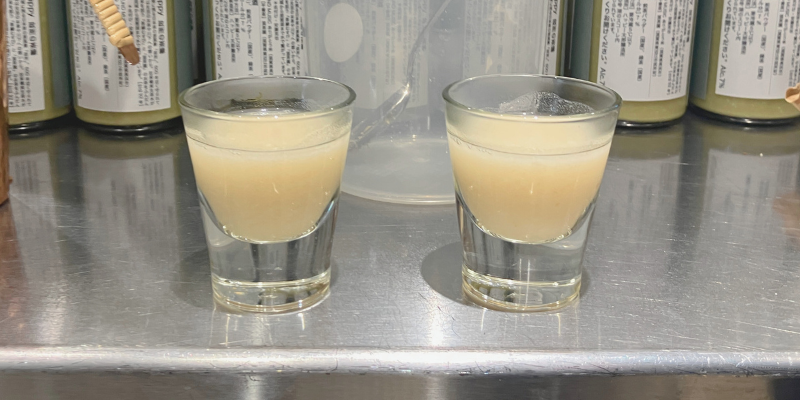Yeast is required for the alcohol fermentation process during sake brewing - just like wine or beer. Each of those fermented beverages uses a different yeast strain that is specific for sake brewing, winemaking, and beer brewing. Compared to your yeasts used during baking those yeasts do have the capability to produce alcohol.
Especially in sake brewing, the strain of yeast used and how the fermentation is carried out directly influence the sake’s aroma and flavor profile. Knowing just a little about sake yeast can help you navigate through different flavors in sake.
So what is yeast anyways?
Yeasts are single-celled microorganisms classified as fungi. Currently, there are at least 1,500 species are currently recognized. Alcohol yeasts like the ones used for brewing beer, wine, or sake consume sugars and produce alcohol, heat, and CO2.

What is the difference between wine and sake yeasts?
Wine yeasts operate usually somewhere between 18-30°C (64-85°F), which is way warmer than the fermentation temperature (often 0-10°C or 32° to 48°F) applied to the fermentation mash of Ginjo or Daiginjo sake. While the wine yeast keeps its fermenting capability until 13-14% alcohol content, the sake yeast can produce alcohol until about 20% alcohol content is reached.
Why would the brewers let the sake yeast ferment at lower temperatures?
The higher the fermentation temperature is the faster the fermentation process itself. For Junmai and Futsushu sake the fermentation is normally conducted at higher temperatures to speed up the fermentation process, resulting in less aromatic and bolder flavor profiles.
For Ginjo and Daiginjo sake the low fermentation temperatures set the yeast under intensive stress, which in turn is said to make the yeast emit certain ester compounds that can be found in fruits like apples or bananas. The slow fermentation process leads to gentle and more aromatic sake.
Some interesting facts about sake yeast
As we learned the basics about sake yeast, here are some interesting facts about this microorganism:
- 20 to 30 billion yeast cells are 1g.
- One ampule of the “Kyokai Yeast” contains 20 billion yeast cells.
- 200 million yeast cells are active per 1ml of sake fermentation mash.
- Under optimal conditions, the yeast cells split every two hours.
- Maximal 200 million cells per 1ml can be detected in sake.
What are the most commonly used sake yeast strains?
The most common yeast strains are maintained and sold by the Brewing Society of Japan. Some breweries still keep their own proprietary yeast strains in-house. Also, the Tokyo Agricultural University promotes more exotic yeast types that can be found in flowers or fruits.

Sake yeast 7 (Kyokai Yeast Number 7) is the most commonly used yeast, which is developed by the Miyasaki brewery in Nagano. It is known and praised for its consistency and fermentation stability, as well as its muted, soft aromas. Therefore it is often used for Junmai or Honjozo sake.
Another popular strain is sake yeast 9 (Kyokai Yeast Number 9). The yeast was discovered at the Koro brewery in Kumamoto. By sake enthusiasts, it is sometimes just referred to as Kumamoto Yeast. It is known for its strong, but slow fermentation resulting in highly aromatic sake. For those characteristics, it is often used for elegant Ginjo and Daiginjo types with fruity and floral notes.
A yeast strain that has gained popularity in recent years is a modern non-foaming sake yeast strain called 1801. The “01” at the end indicates that the yeast is a non-foaming strain that allows using the tanks to the top, thus increasing the efficiency with higher fermentation tank volumes. Known for its pronounced floral and fruity aromas, the yeast that is often used for Daiginjo sake with sweet, fruity aromas.
How to purchase sake yeast
Thinking of brewing sake? Then you will probably need to purchase sake yeast from the Brewing Society of Japan.

Japanese sake brewers most of the time purchase their yeast from the Brewing Society of Japan. The so-called “Kyokaikobo” is a special sake yeast that is cultivated for sake brewing purposes and sold by the Brewing Society of Japan. Sake yeasts are generally available as dry yeast and in liquid form.
For overseas sake producers though, only the sake yeast 701 and sake yeast 901 are available as dry yeast. Within Japan a broader variety of yeast strains is available. National producers also can for example get their hands on the modern #1801 yeast or even red color yeast strains.
While the sake yeast 701 and sake yeast 901 are one of the most robust sake yeasts on the market, this limitation might hinder more creative sake brewed overseas.
More on how to purchase sake yeast from overseas can be read here directly on the Brewing Society of Japan’s website.







